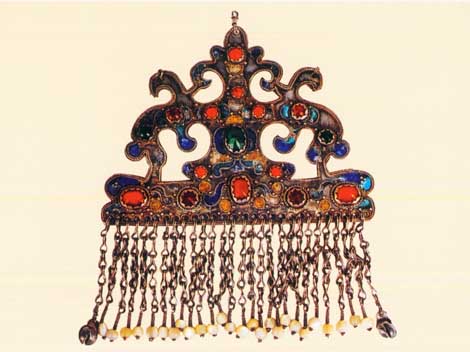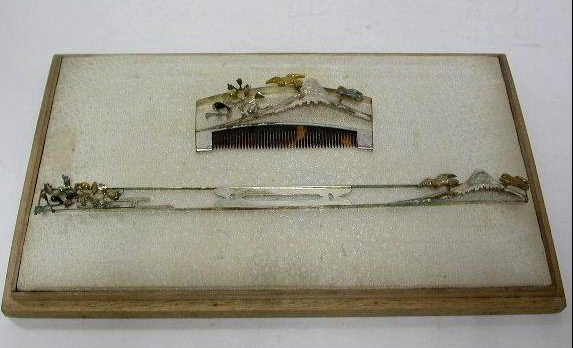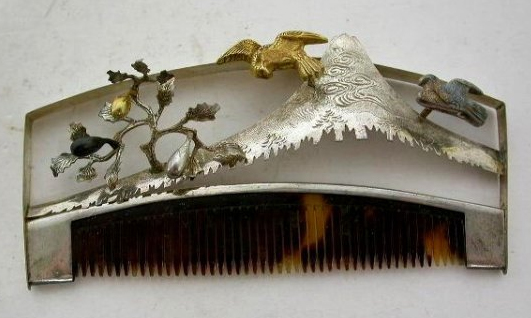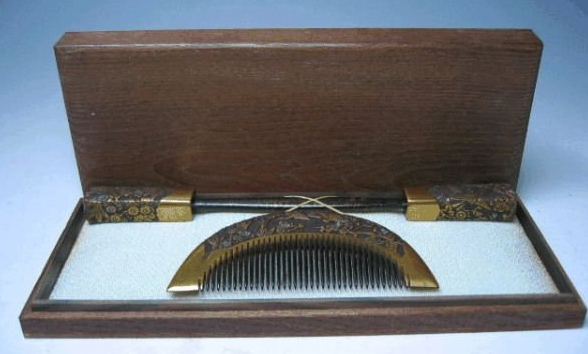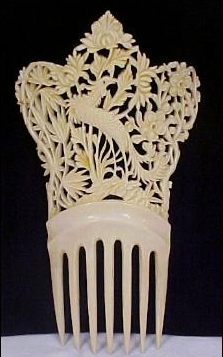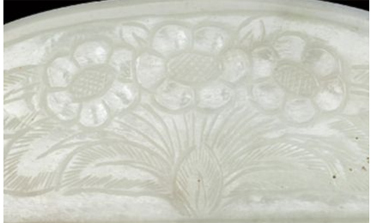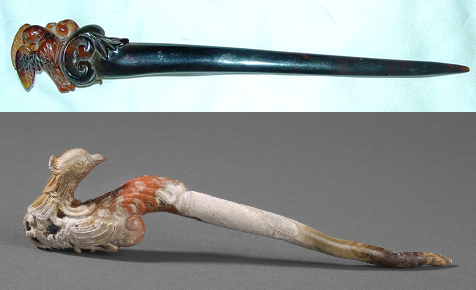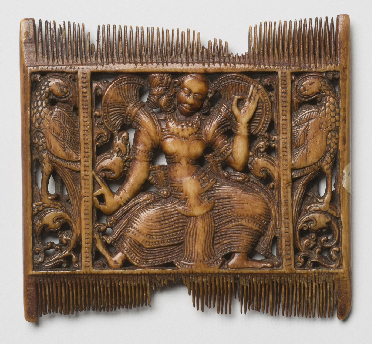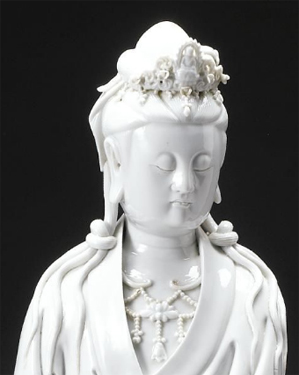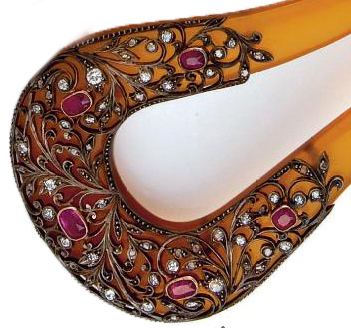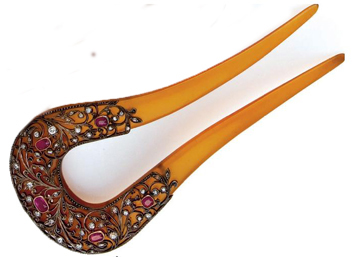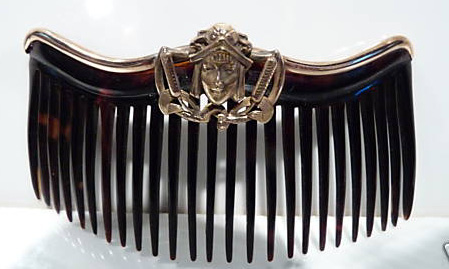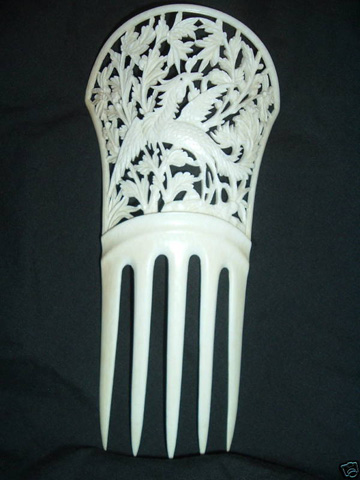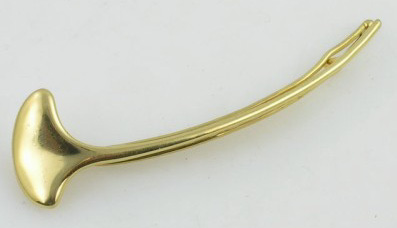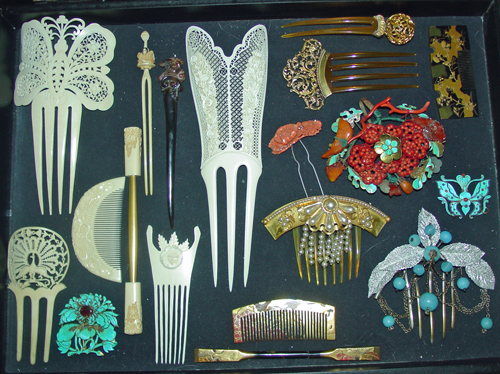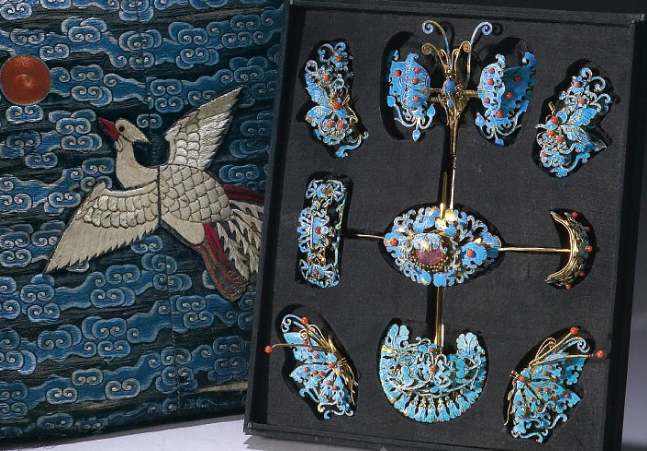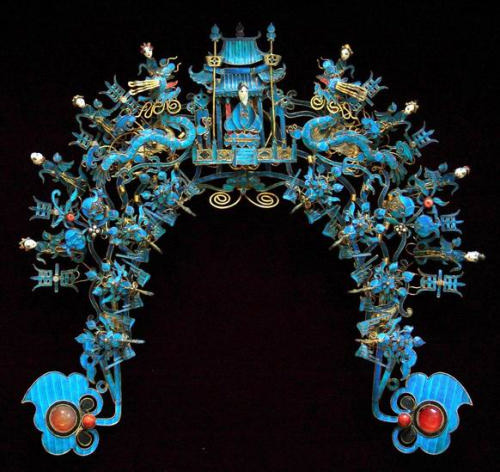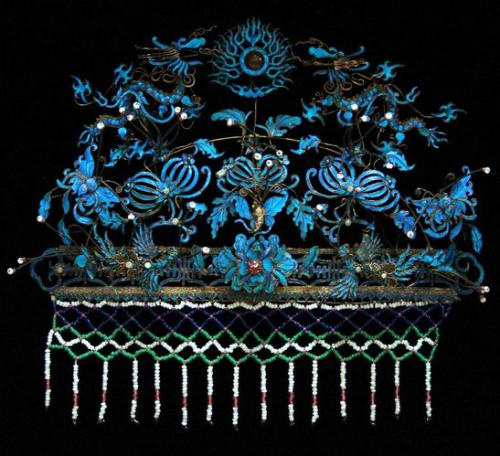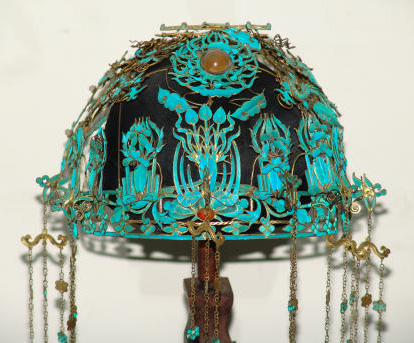China’s Jiangsu Province now has a comb museum. Displaying 300 ancient combs, the museum is located in Changzhou.
The combs of Changzhou fall into two categories: Shue and Bi. Shue combs are made of wood and are practical items with which to comb hair. The Bi is fine-toothed and used to clean the hair of debris. Both combs were made into an art form and were given as gifts of tribute at the Imperial Court.
To celebrate the opening of this museum, I thought I’d do a post on Chinese combs and hair sticks. This is a Changzhou Bi comb. Made of ivory and brass, the artist painted a Chinese scene with perspective and signed the piece.
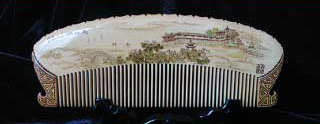
These are two Chinese hair sticks from the Qing Dynasty (1945-present):
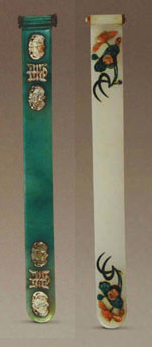
And this is a bridal hair ornament from Kazakstan, an autonomous region of China.